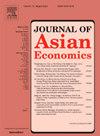公共卫生危机后企业层面的影响和恢复动态:中国 SARS 经验的启示
IF 2.9
3区 经济学
Q1 ECONOMICS
引用次数: 0
摘要
随着世界从COVID-19大流行中复苏,经济全面复苏的时间表和危机的长期影响仍然不确定,如何应对未来的大流行构成了持续的挑战。中国在21世纪遭受了两次重大公共卫生危机的严重打击,本研究借鉴了中国的经验,为复苏过程提供了见解。重点是2003年严重急性呼吸系统综合症(SARS)的流行,我们检查其对企业绩效和随后的恢复动态的影响。为了建立稳健的因果关系,我们采用了差异中的差异(DD)估计策略,并辅以广泛的稳健性检查。利用中国制造业的企业层面数据,我们发现销售和产出都经历了显著的短期下降,但很快反弹到疫情前的水平。进一步的分析表明,这些不利影响主要是由供应方面的中断而不是需求方面的冲击驱动的,导致复苏轨迹较慢。异质性分析表明,SARS的影响和复苏速度因公司规模、所有权结构和当地互联网普及率而有很大差异。这些发现对公共卫生危机后制造企业的复苏动态提供了有价值的见解。本文章由计算机程序翻译,如有差异,请以英文原文为准。
Firm-level impacts and recovery dynamics following a public health crisis: Lessons from China’s SARS experience
As the world recovers from the COVID-19 pandemic, the timeline for full economic recovery and the long-term effects of the crisis remain uncertain, and how to respond to future pandemics poses ongoing challenges. This study draws on China’s experience, a country that has suffered severely from two major public health crises in the 21st century, to provide insights into the recovery process. Focusing on the 2003 Severe Acute Respiratory Syndrome (SARS) epidemic, we examine its impact on firm performance and subsequent recovery dynamics. To establish a robust causal relationship, we employ a difference-in-differences (DD) estimation strategy complemented by extensive robustness checks. Using firm-level data from China’s manufacturing sector, we find that both sales and output experienced significant short-term declines but quickly rebounded to pre-epidemic levels. Further analysis reveals that these adverse effects were primarily driven by supply-side disruptions rather than demand-side shocks, leading to a slower recovery trajectory. Heterogeneity analyses indicate that the impacts of SARS and the pace of recovery varied substantially by firm size, ownership structure, and local internet penetration. These findings offer valuable insights into the recovery dynamics of manufacturing firms in the aftermath of a public health crisis.
求助全文
通过发布文献求助,成功后即可免费获取论文全文。
去求助
来源期刊

Journal of Asian Economics
ECONOMICS-
CiteScore
4.70
自引率
9.40%
发文量
90
期刊介绍:
The Journal of Asian Economics provides a forum for publication of increasingly growing research in Asian economic studies and a unique forum for continental Asian economic studies with focus on (i) special studies in adaptive innovation paradigms in Asian economic regimes, (ii) studies relative to unique dimensions of Asian economic development paradigm, as they are investigated by researchers, (iii) comparative studies of development paradigms in other developing continents, Latin America and Africa, (iv) the emerging new pattern of comparative advantages between Asian countries and the United States and North America.
 求助内容:
求助内容: 应助结果提醒方式:
应助结果提醒方式:


